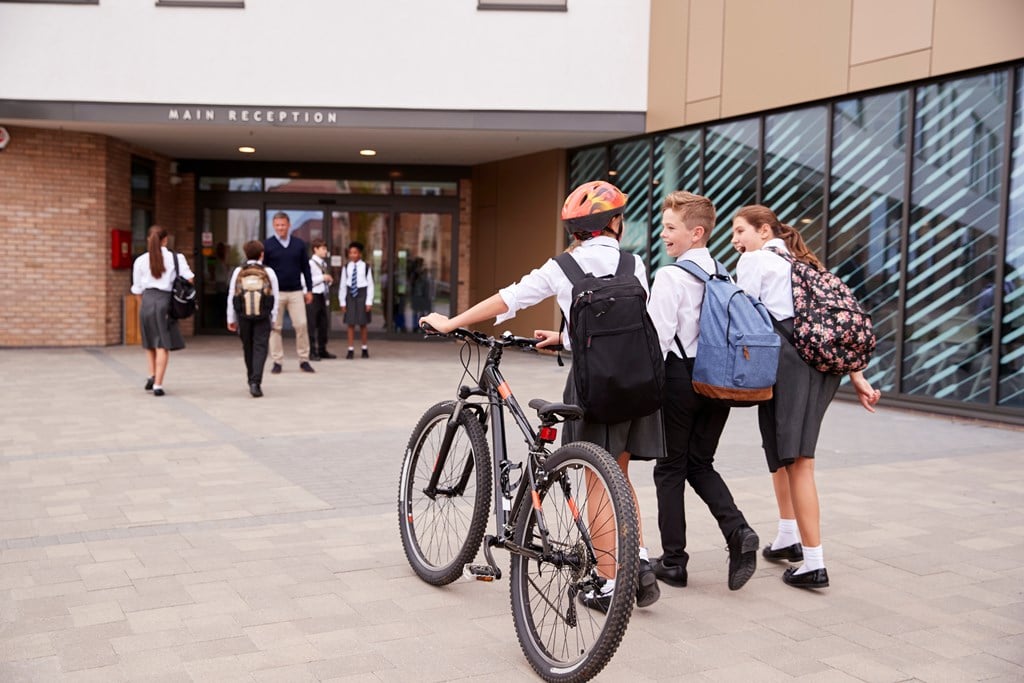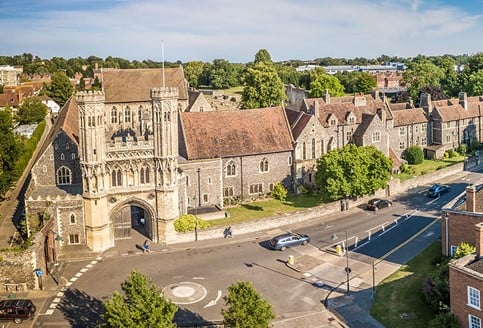
Schools out! How can we help schools reduce false alarms?
Mike Sutton MIET MIFSM GIFireE
Educational premises are one of the biggest culprits for false alarms, costing the fire service millions each year. In this article, we explore how to reduce false alarms in schools.
It’s nearly that time of the year when schools break up for their six-week summer break, the perfect opportunity for schools to get on top of their maintenance, cleaning and even upgrading their fire alarm system. Major works to the system are often done in the summer holidays as it causes huge disruption to the site and can require several weeks or even months to complete.
Something to bear in mind when working on educational premises is that they are one of the biggest culprits for false alarms, and this costs the fire service millions each year. So, what are some of the things that reduce them?
When false alarms occur, they should be recorded within the fire system logbook under the following descriptions:
- Unwanted alarm – an incident like burning toast or steam mistaken for a real fire.
- Equipment false alarm – an alarm generated by a piece of equipment which is faulty.
- Malicious false alarm – someone deliberately breaking a Manual Call Point.
- False alarm with good intent – someone incorrectly sensing a fire.
Unwanted alarms
Solution: Installing a more intelligent range and choosing the correct detector type for the environment.
Although our reliable ‘fit & forget solution’ XP95 has been protecting educational premises for almost 30 years, in some circumstances, it would be beneficial for the school to invest in a more advanced solution.

The main difference between our XP95, Discovery and Soteria ranges is the resiliency to false alarms. For example:
Discovery is more adaptable than XP95, combining sophisticated algorithms and five operating modes to make it suitable for protecting more complex environments. The range incorporates drift compensation to enable stable, sustained smoke analysis by continually assessing and adjusting the alarm thresholds.
Furthermore, our latest collection of SOTERIA® addressable fire detectors, are the next generation in fire recognition technology. Designed to offer advanced protection, it uses patented Purelight technology for false alarm reduction, which incorporates a unique smoke entry path, an improved chamber and an advanced processing centre to help reduce false alarms.
Although the initial investment of a modern and sophisticated fire alarm system is more than your standard XP95 system, in the long run, the Total Cost of Ownership can be substantially reduced. Additionally, the fire service may charge premises with frequent call outs.
Choosing the correct detector type for the environment
Detectors falsely activating due to toast burning or smoke in science class can be avoided by the correct detector being installed. Within each of our product ranges, there are a variety of detector types that may be selected for challenging environments. Here are some examples:
Standard Classroom - An optical detector would be ideal.
Science classroom - Your safest option is an optical detector. However, if the risk assessment allows, you can temporarily isolate the local devices when burning using Bunsen burners etc. You could specify Multisensors here and use panel functions to go from smoke to ‘heat only’ mode to stop false alarms during lessons
Canteen/kitchen - Here you’d use heat detectors, but make sure they are high temperature ones near the ovens.
A busy corridor – These areas have huge dirt build up, therefore opting for a multi-sensor aids the elimination of false alarms. Specifically, Discovery & Soteria ranges due to their multiple modes. According to BRE, the replacement of existing detectors with intelligent multi-sensor detectors was the solution that could reduce false alarms by the greatest amount (69%). www.bre.co.uk/page.jsp?id=3391
Swimming pool – These areas are very moist, and the only electricals are light fittings. Therefore, the likelihood of a fire breaking out is substantially lower. This means that you can just fit Manual Call Points to protect these areas, but a weatherproof solution would be best (subject to your risk assessment.)
Equipment false alarms
Solution: Make the end user aware of the importance of maintenance visits
Luckily, as most are run by the councils, schools are generally good at ensuring their maintenance visits occur. Talk to the Maintenance Manager about the importance of regular maintenance visits. High-traffic areas like schools are prone to dirt build-up so it’s crucial they’re cleaned regularly. Equipment faults, especially when old equipment is in use, is a huge reason for false alarms. However, sometimes just the one detector might need to be replaced rather than the whole system.
Malicious false alarms
Solution: Safety cages, audible alarms and plastic covers
Children will be mischievous! Malicious activity from school children will no doubt happen at every school. However, there are some simple solutions to reduce this problem such as fitting plastic covers to fire alarms, which since 2017 is a requirement of BS 58369 parts 1 & 6. (don’t use plastic cages over detectors though as this could affect the response time) Also, you can add audible alarms to covers to scare any potential vandals. Sometimes however, this is accidental activity – such as kids playing in sports halls and knocking a low-level normally at high level sounder. This can easily be reduced by investing in a protective cage for the device.
Resources
We’re here to help!
We’re passionate about keeping people safe from fire, so if you’d like some advice about installing a fire system in educational premises, contact our Technical Support team at +44 (0)23 9244 2706 or techsales@apollo-fire.com.
We offer FREE weekly CPD’s on subjects such as Device Selection and False Alarm Management. Visit our CPD page to book your space!
 The Kings School in Canterbury chose Apollo XP95 detectors for their reliability and the fact that the open protocol system is forward and backward compatible, therefore helping to integrate the new installation with the existing system.
The Kings School in Canterbury chose Apollo XP95 detectors for their reliability and the fact that the open protocol system is forward and backward compatible, therefore helping to integrate the new installation with the existing system.

Due to the advanced technology significantly reducing the risk of false alarms, Soteria was the ideal choice for Marchwood Junior School. However, the installation had to be completed during term time when the building was occupied.